his guide assumes you have read Part 1 of the H3-3D with FPV setup or, have at least installed your anti interference board. Onto fitting the gimbal to the craft...  The Zenmuse H3-3D gimbal comes in a black box as shown above.
The Zenmuse H3-3D gimbal comes in a black box as shown above.  Here are the contents. The gimbal itself, a mounting plate (with anti-vibration damper mounts pre-mounted), the GoPro locking bar, two small bags of screws, four anti drop mounts, three alternate type anti-vibration mounts, a USB plug and two ribbon cables used to connect the GoPro to the gimbal.
Here are the contents. The gimbal itself, a mounting plate (with anti-vibration damper mounts pre-mounted), the GoPro locking bar, two small bags of screws, four anti drop mounts, three alternate type anti-vibration mounts, a USB plug and two ribbon cables used to connect the GoPro to the gimbal.  Starting with the mounting plate, it lines up on the bottom of the craft as such, the offset mounting holes help you line it up.
Starting with the mounting plate, it lines up on the bottom of the craft as such, the offset mounting holes help you line it up.  Before screwing it down, slip two of the male parts of the anti-drop mounts through the front edge of the mounting plate. We find that fitting rear anti-drop mounts can get in the way of the gimbal’s rear arm. The anti-drop mounts simply stop the gimbal from falling off the craft should the rubber mounts become detached from the mounting plate.
Before screwing it down, slip two of the male parts of the anti-drop mounts through the front edge of the mounting plate. We find that fitting rear anti-drop mounts can get in the way of the gimbal’s rear arm. The anti-drop mounts simply stop the gimbal from falling off the craft should the rubber mounts become detached from the mounting plate.  Grab the screw bag and use a cross-head screwdriver to fix the mounting plate onto the bottom of the craft.
Grab the screw bag and use a cross-head screwdriver to fix the mounting plate onto the bottom of the craft.  Whilst the gimbal is off the craft, it makes it easier to mount the USB plug for the GoPro. Remove it from its bag and ensure the small black lever is in the up position.
Whilst the gimbal is off the craft, it makes it easier to mount the USB plug for the GoPro. Remove it from its bag and ensure the small black lever is in the up position.  Slip it onto the ribbon cable so it will face inward to the gimbal and clamp it down.
Slip it onto the ribbon cable so it will face inward to the gimbal and clamp it down.  Now the gimbal can be fitted. Ensure it is facing the front of the craft before squeezing each extended end of the anti-vibration mounts through the holes. We find if you rotate the rubber mounts it can help with slipping the lips through.
Now the gimbal can be fitted. Ensure it is facing the front of the craft before squeezing each extended end of the anti-vibration mounts through the holes. We find if you rotate the rubber mounts it can help with slipping the lips through.  Fitting the GoPro is simply a matter of slipping it into the cradle before attaching the locking bar, ensuring you have the GoPro the right way up.
Fitting the GoPro is simply a matter of slipping it into the cradle before attaching the locking bar, ensuring you have the GoPro the right way up.  This is screwed in from the rear of the gimbal with two of the black 2mm hex bolts.
This is screwed in from the rear of the gimbal with two of the black 2mm hex bolts.  The Gopro can now be plugged in. Remove the rubber protective cover (if your GoPro camera has one) from the right hand side of the camera to reveal the ports. Plug the Mini-USB ribbon plug into the available mini-USB port on the camera. Avoid powering up the gimbal without a GoPro camera inserted.
The Gopro can now be plugged in. Remove the rubber protective cover (if your GoPro camera has one) from the right hand side of the camera to reveal the ports. Plug the Mini-USB ribbon plug into the available mini-USB port on the camera. Avoid powering up the gimbal without a GoPro camera inserted.  Finally connect the gimbal via the grey 8-pin wire hanging out of the bottom of the craft. The craft can now be powered up.
Finally connect the gimbal via the grey 8-pin wire hanging out of the bottom of the craft. The craft can now be powered up.  Booting the Phantom up, the gimbal should come alive. We recommend plugging the craft straight into the Phantom 2 Assist software (available on PC and Mac) and ensuring your gimbal is running the latest firmware.
Booting the Phantom up, the gimbal should come alive. We recommend plugging the craft straight into the Phantom 2 Assist software (available on PC and Mac) and ensuring your gimbal is running the latest firmware.  The upgrade tab is where the firmware information can be found. Note that our H3-3D IMU firmware is out of date. Clicking the blue text to the right begins the upgrade process. During upgrading the gimbal may jerk around but this is normal.
The upgrade tab is where the firmware information can be found. Note that our H3-3D IMU firmware is out of date. Clicking the blue text to the right begins the upgrade process. During upgrading the gimbal may jerk around but this is normal.  The Phantom 2 controller has a lever on the back that controls the tilt of the camera on its X axis. This enables you to point the camera forward, straight down at the ground and many degrees in between. It is always a good idea to configure the endpoints of this lever before flying. To do this start a ‘X1 Calibration’ on the Basic>RC tab as seen above. Move the lever from one end to the other before pressing finish.
The Phantom 2 controller has a lever on the back that controls the tilt of the camera on its X axis. This enables you to point the camera forward, straight down at the ground and many degrees in between. It is always a good idea to configure the endpoints of this lever before flying. To do this start a ‘X1 Calibration’ on the Basic>RC tab as seen above. Move the lever from one end to the other before pressing finish.  With this process completed the gimbal configuration should be complete. Should you find that your gimbal does not go ‘all the way down’ or ‘all the way up’ then select the Advanced>Gimbal tab and adjust the Gimbal configuration.
With this process completed the gimbal configuration should be complete. Should you find that your gimbal does not go ‘all the way down’ or ‘all the way up’ then select the Advanced>Gimbal tab and adjust the Gimbal configuration.  Adjusting these limits will change the endpoint angle of the gimbal. They may appear greyed out in the assistant but they will be adjustable. With the lever set to its extreme you can tweak these values until your desired endpoint is reached.
Adjusting these limits will change the endpoint angle of the gimbal. They may appear greyed out in the assistant but they will be adjustable. With the lever set to its extreme you can tweak these values until your desired endpoint is reached.
 The Zenmuse H3-3D gimbal comes in a black box as shown above.
The Zenmuse H3-3D gimbal comes in a black box as shown above.  Here are the contents. The gimbal itself, a mounting plate (with anti-vibration damper mounts pre-mounted), the GoPro locking bar, two small bags of screws, four anti drop mounts, three alternate type anti-vibration mounts, a USB plug and two ribbon cables used to connect the GoPro to the gimbal.
Here are the contents. The gimbal itself, a mounting plate (with anti-vibration damper mounts pre-mounted), the GoPro locking bar, two small bags of screws, four anti drop mounts, three alternate type anti-vibration mounts, a USB plug and two ribbon cables used to connect the GoPro to the gimbal.  Starting with the mounting plate, it lines up on the bottom of the craft as such, the offset mounting holes help you line it up.
Starting with the mounting plate, it lines up on the bottom of the craft as such, the offset mounting holes help you line it up.  Before screwing it down, slip two of the male parts of the anti-drop mounts through the front edge of the mounting plate. We find that fitting rear anti-drop mounts can get in the way of the gimbal’s rear arm. The anti-drop mounts simply stop the gimbal from falling off the craft should the rubber mounts become detached from the mounting plate.
Before screwing it down, slip two of the male parts of the anti-drop mounts through the front edge of the mounting plate. We find that fitting rear anti-drop mounts can get in the way of the gimbal’s rear arm. The anti-drop mounts simply stop the gimbal from falling off the craft should the rubber mounts become detached from the mounting plate.  Grab the screw bag and use a cross-head screwdriver to fix the mounting plate onto the bottom of the craft.
Grab the screw bag and use a cross-head screwdriver to fix the mounting plate onto the bottom of the craft.  Whilst the gimbal is off the craft, it makes it easier to mount the USB plug for the GoPro. Remove it from its bag and ensure the small black lever is in the up position.
Whilst the gimbal is off the craft, it makes it easier to mount the USB plug for the GoPro. Remove it from its bag and ensure the small black lever is in the up position.  Slip it onto the ribbon cable so it will face inward to the gimbal and clamp it down.
Slip it onto the ribbon cable so it will face inward to the gimbal and clamp it down.  Now the gimbal can be fitted. Ensure it is facing the front of the craft before squeezing each extended end of the anti-vibration mounts through the holes. We find if you rotate the rubber mounts it can help with slipping the lips through.
Now the gimbal can be fitted. Ensure it is facing the front of the craft before squeezing each extended end of the anti-vibration mounts through the holes. We find if you rotate the rubber mounts it can help with slipping the lips through.  Fitting the GoPro is simply a matter of slipping it into the cradle before attaching the locking bar, ensuring you have the GoPro the right way up.
Fitting the GoPro is simply a matter of slipping it into the cradle before attaching the locking bar, ensuring you have the GoPro the right way up.  This is screwed in from the rear of the gimbal with two of the black 2mm hex bolts.
This is screwed in from the rear of the gimbal with two of the black 2mm hex bolts.  The Gopro can now be plugged in. Remove the rubber protective cover (if your GoPro camera has one) from the right hand side of the camera to reveal the ports. Plug the Mini-USB ribbon plug into the available mini-USB port on the camera. Avoid powering up the gimbal without a GoPro camera inserted.
The Gopro can now be plugged in. Remove the rubber protective cover (if your GoPro camera has one) from the right hand side of the camera to reveal the ports. Plug the Mini-USB ribbon plug into the available mini-USB port on the camera. Avoid powering up the gimbal without a GoPro camera inserted.  Finally connect the gimbal via the grey 8-pin wire hanging out of the bottom of the craft. The craft can now be powered up.
Finally connect the gimbal via the grey 8-pin wire hanging out of the bottom of the craft. The craft can now be powered up.  Booting the Phantom up, the gimbal should come alive. We recommend plugging the craft straight into the Phantom 2 Assist software (available on PC and Mac) and ensuring your gimbal is running the latest firmware.
Booting the Phantom up, the gimbal should come alive. We recommend plugging the craft straight into the Phantom 2 Assist software (available on PC and Mac) and ensuring your gimbal is running the latest firmware.  The upgrade tab is where the firmware information can be found. Note that our H3-3D IMU firmware is out of date. Clicking the blue text to the right begins the upgrade process. During upgrading the gimbal may jerk around but this is normal.
The upgrade tab is where the firmware information can be found. Note that our H3-3D IMU firmware is out of date. Clicking the blue text to the right begins the upgrade process. During upgrading the gimbal may jerk around but this is normal.  The Phantom 2 controller has a lever on the back that controls the tilt of the camera on its X axis. This enables you to point the camera forward, straight down at the ground and many degrees in between. It is always a good idea to configure the endpoints of this lever before flying. To do this start a ‘X1 Calibration’ on the Basic>RC tab as seen above. Move the lever from one end to the other before pressing finish.
The Phantom 2 controller has a lever on the back that controls the tilt of the camera on its X axis. This enables you to point the camera forward, straight down at the ground and many degrees in between. It is always a good idea to configure the endpoints of this lever before flying. To do this start a ‘X1 Calibration’ on the Basic>RC tab as seen above. Move the lever from one end to the other before pressing finish.  With this process completed the gimbal configuration should be complete. Should you find that your gimbal does not go ‘all the way down’ or ‘all the way up’ then select the Advanced>Gimbal tab and adjust the Gimbal configuration.
With this process completed the gimbal configuration should be complete. Should you find that your gimbal does not go ‘all the way down’ or ‘all the way up’ then select the Advanced>Gimbal tab and adjust the Gimbal configuration.  Adjusting these limits will change the endpoint angle of the gimbal. They may appear greyed out in the assistant but they will be adjustable. With the lever set to its extreme you can tweak these values until your desired endpoint is reached.
Adjusting these limits will change the endpoint angle of the gimbal. They may appear greyed out in the assistant but they will be adjustable. With the lever set to its extreme you can tweak these values until your desired endpoint is reached.
-

-

-

-

-

-
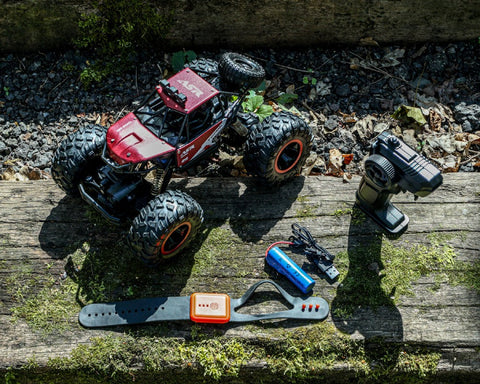
-

-

-

-
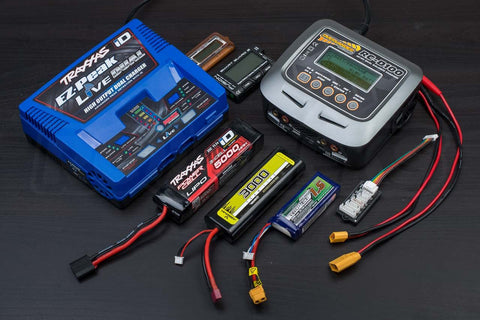
-
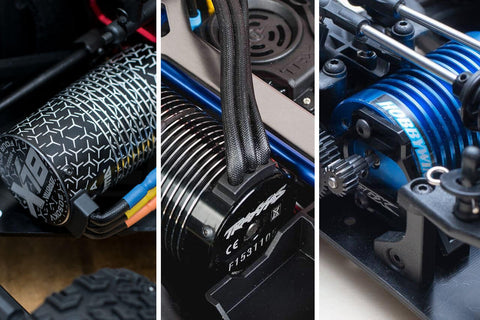
-

-

-

-

-

-

-

-

-

-

-

-
 reviews
reviewsAxial SCX10 II Jeep Cherokee Scale Crawler Review : Does it live up to its reputa...
Tom Begley | -

-

-

-

-

-

-

-

-

-

-

-

-

-

-
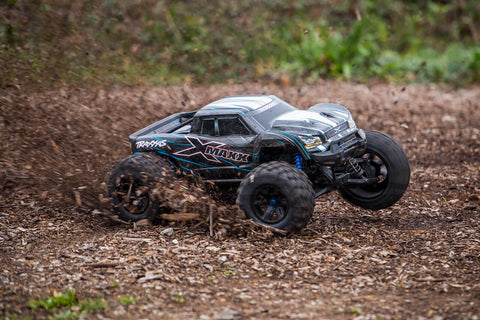
-
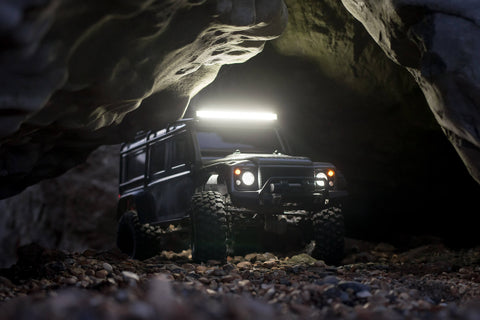
-

-

-

-

-

-

-
 tutorial
tutorialMavic 2 & DJI Goggles : The ultimate pairing in filming, inspections & surveys
Tom Begley | -

-

-

-

-

-

-

-

-

-

-

-

-

-

-

-

-

-

-
 reviews
reviewsFrSKY's Taranis Q X7 Transmitter - A budget alternative to the Taranis Plus X9D?
Tom Begley | -

-

-

-

-

-

-

-

-

-

-

-

-

-

-

-

-

-

-

-

-

-

-

-

-

-

-

-

-

-

-

-

-

-

-

-

-

-

-

-

-

-












































































































